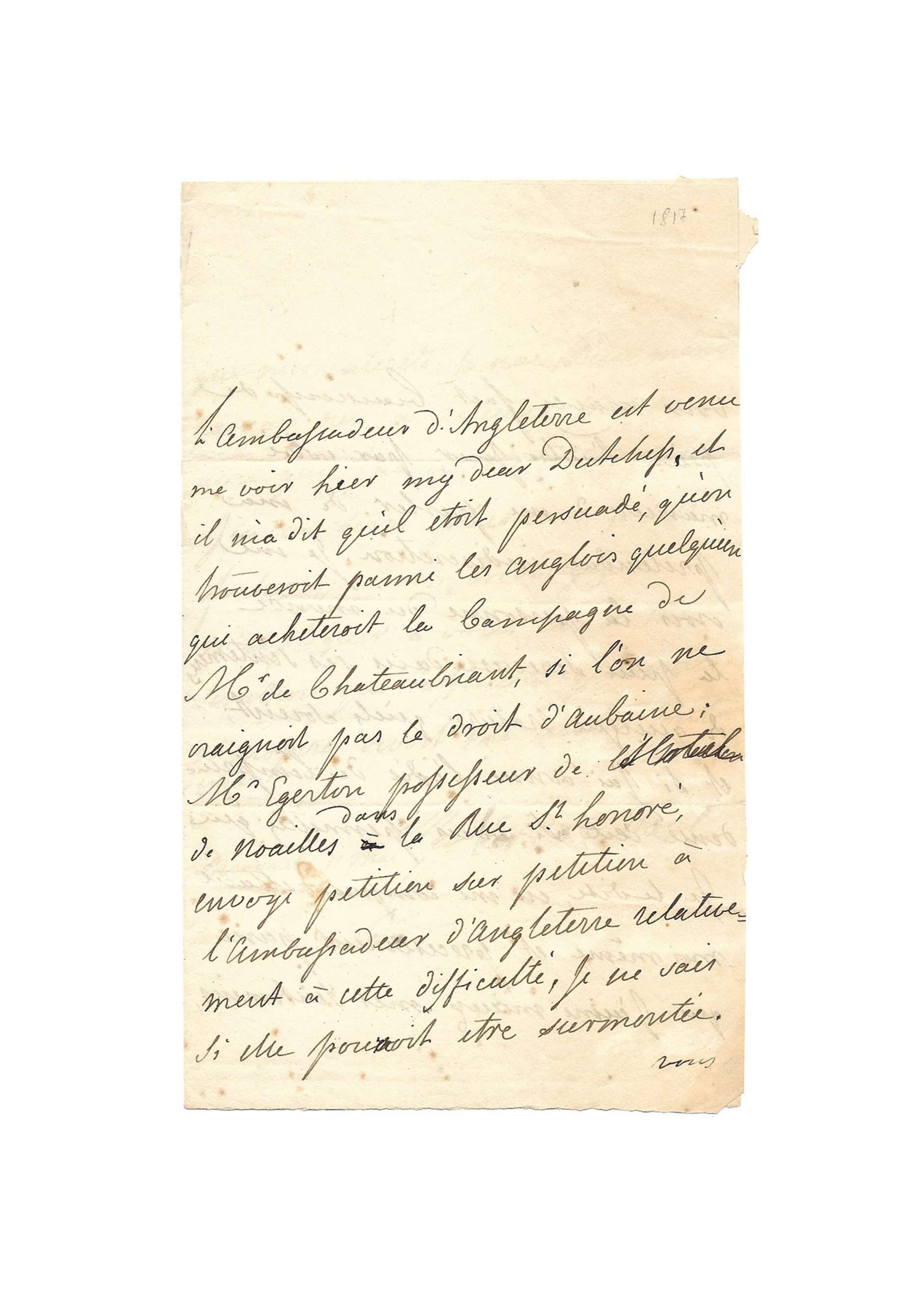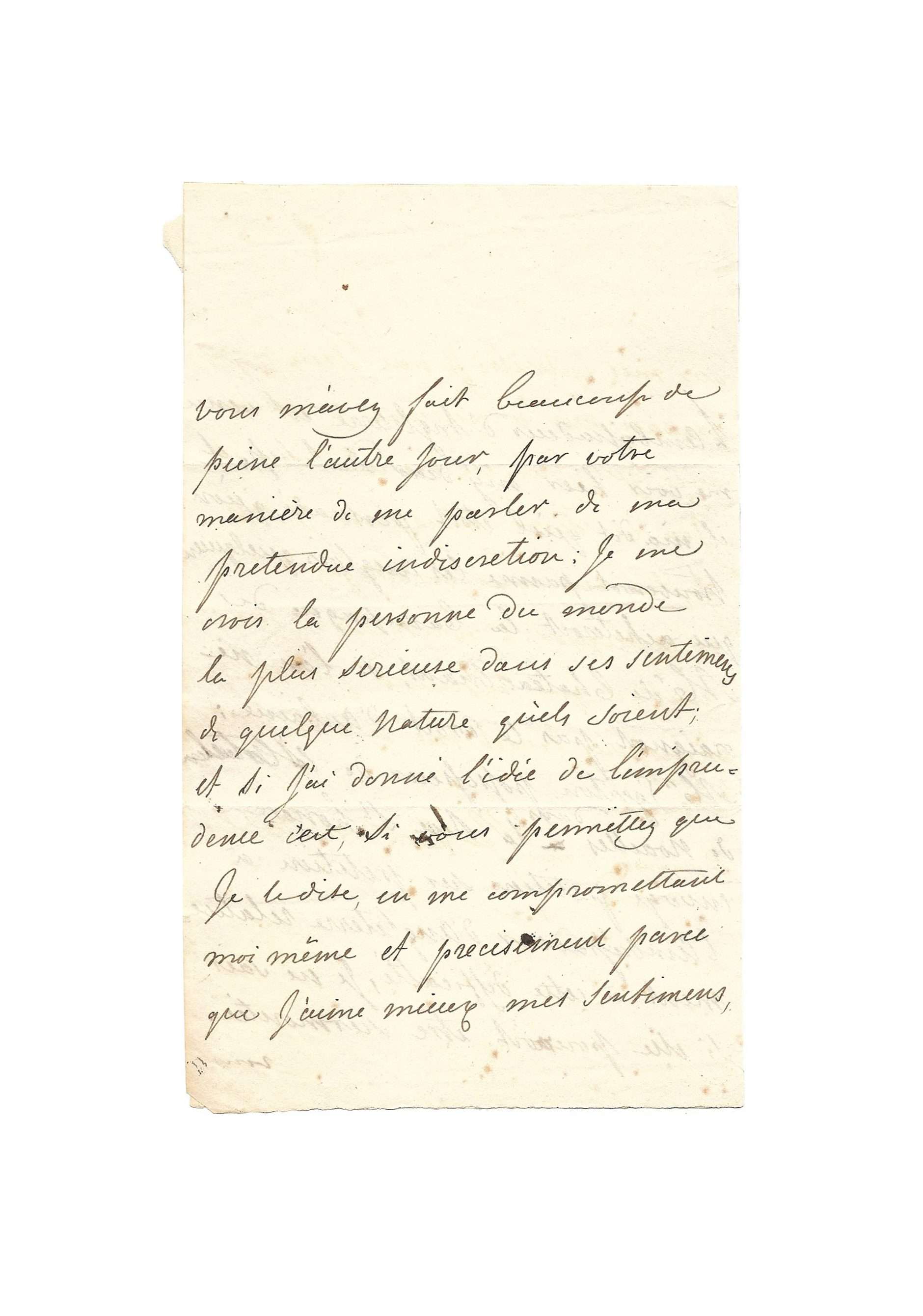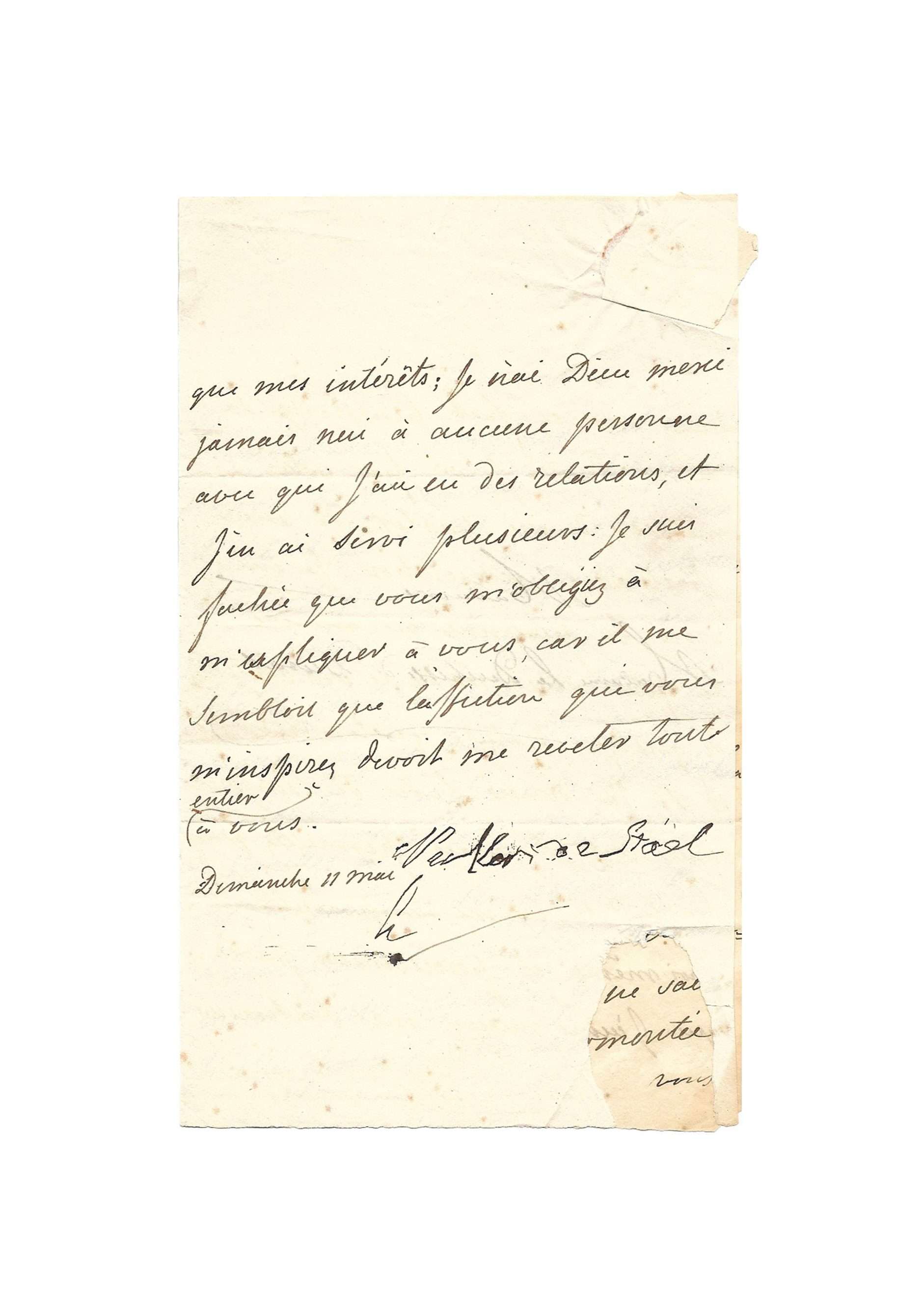[CHATEAUBRIAND] STAËL (de), Germaine (1766-1817)
Letter signed « Necker de Staël » to Claire de Duras
[Paris] Sunday 11th May [1817], 3 pp. in-8°
« I have, thank God, never harmed anyone with whom I have had dealings »
Fact sheet
[CHATEAUBRIAND] STAËL (de), Germaine (1766-1817)
Letter signed « Necker de Staël » to Claire de Duras
[Paris] Sunday 11th May [1817], 3 pp. in-8°
Address on fourth page
Broken was seal (fragment conserved), some browning spots (see scans)
One of Germaine de Staël’s very last letters, bearing a twilight signature, evokes the Vallée-aux-Loups, which Chateaubriand was then seeking to part with
« L’ambassadeur d’Angleterre est venu me voir hier, my dear dutchess, et il m’a dit qu’il était persuadé qu’on trouverait parmi les Anglais quelqu’un qui achèterait la campagne de M. de Chateaubriant [sic] si l’on ne craignait pas le droit d’aubaine ; M. Egerton, possesseur de l’hôtel de Noailles dans la rue Saint-Honoré envoie pétition sur pétition à l’ambassadeur d’Angleterre relativement à cette difficulté, je ne vois si elle pourrait être surmontée.
Vous m’avez fait beaucoup de peine l’autre jour par votre manière de me parler de ma prétendue indiscrétion. Je me crois la personne du monde la plus sérieuse dans ses sentiments de quelque nature qu’ils soient ; et si j’ai donné l’idée de l’imprudence c’est si vous permettez que je le dise en me compromettant moi-même et précisément parce que j’aime mieux mes sentiments que mes intérêts ; je n’ai, Dieu merci, jamais nui à aucune personne avec qui j’ai eu des relations, et j’en ai servi plusieurs : je suis fâchée que vous m’obligiez à m’expliquer à vous, car il me semblait que l’affection que vous m’inspirez devait me révéler tout entier à vous.
Dimanche 11 mai
Necker de Staël »
A pivotal figure of European intellectual life at the turn of the eighteenth and nineteenth centuries, Germaine de Staël benefited from an enlightened education and an environment conducive to the exchange of ideas from an early age. From the turbulent years of the Revolution to the dawn of the Restoration, the social upheavals of her time provided abundant material for her intellectual production, making the mother of Delphine a key mediator between Enlightenment thought and emerging Romanticism. As the Restoration began and her life drew to a close, she developed a deep affection for Claire de Duras, eleven years her junior, who had not yet embarked on her literary career. Their intellectual affinities and mutual esteem no doubt helped to soften the final years of Madame de Staël, who passed away in July 1817.
It was in February 1817 that Germaine de Staël was struck by paralysis upon arriving at a ball hosted by the Duke Decazes. This paralysis, of nephritic origin, deprived her of the use of almost all her limbs. She nevertheless remained fully conscious and continued to receive guests in her home. The letters written by the Baroness from this period until her death, six months later, were for the most part dictated to her son.
Provenance:
Duchesse de Duras
Marquis de Lubersac (by descent)
Then private collection
Bibliography:
Baronne de Staël et la Duchesse de Duras, éd. Comte d’Haussonville, Imp. du Figaro, 1910, p. 46







